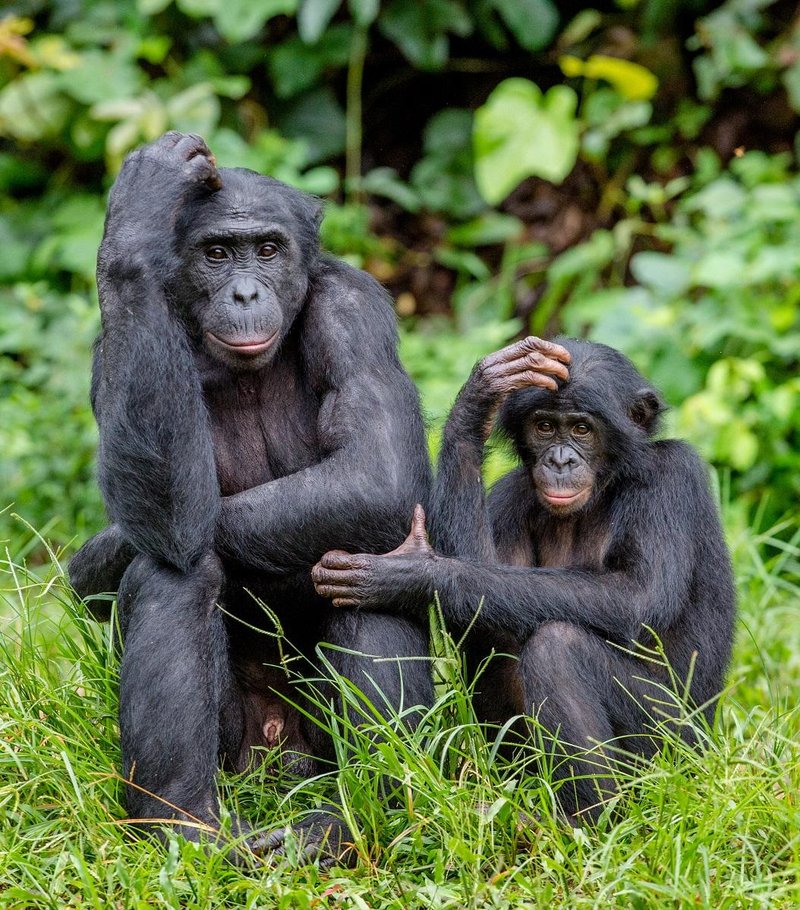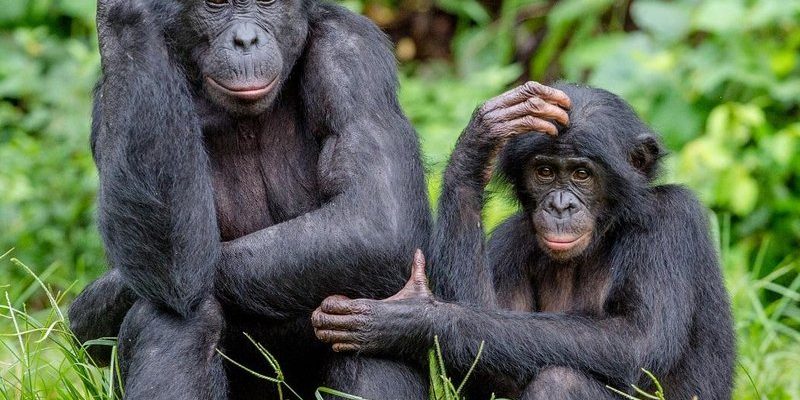
Now, to dive into this topic, let’s picture the lush rainforests of the Congo River Basin, where bonobos can be found. These forests are not just their home; they’re a thriving network of life. Bonobos, with their playful attitudes and social structures, are a key piece of this ecological puzzle. So, let’s unpack the multifaceted role these amazing apes play in maintaining their environment.
The Social Structure of Bonobos
Bonobos have a unique social structure that sets them apart from other primates. They live in matriarchal communities, where females often hold higher status than males. This structure fosters cooperation and reduces conflict, which is pretty remarkable in the animal kingdom. You might picture these groups like a family reunion, where the elders have a say in decision-making, ensuring that everyone gets along.
Why does this matter for the ecosystem? Bonobos are known for their peaceful interactions, which help maintain stability within their communities. When stress levels are low, animals tend to engage in more foraging and feeding behaviors. This means bonobos spend more time in the trees, which leads to the dispersal of seeds through their droppings. Yes, you heard it right—these apes are not just playful; they’re also little gardeners of the forest!
Seed Dispersal and Forest Regeneration
Speaking of gardening, let’s talk about how bonobos contribute to *seed dispersal*. When bonobos eat fruits, they don’t just munch and move on—they help plant new trees along the way. As they roam the forest, their droppings contain seeds that can sprout into new plants, giving rise to a whole new generation of vegetation. It’s like they’re nature’s delivery service for the forests.
This behavior is crucial for forest regeneration. In regions where bonobos are present, there’s a higher diversity of plant species. More plant diversity means a healthier ecosystem, which supports various other wildlife. Think of it as a symphony, where each plant and animal plays its part, creating a harmonious environment that benefits everyone. Without bonobos, the forests might not thrive as they do today.
Bonobos and Their Role as Predators
While bonobos primarily eat fruits, they’re not strictly herbivores. They occasionally hunt small animals, like rodents or birds, which impacts the population dynamics of these species. Here’s the thing: predators are vital for maintaining balance in ecosystems. When bonobos keep prey populations in check, it helps prevent any one species from dominating the area.
You might wonder how this balance works. If prey species multiply unchecked, they can deplete resources, which could lead to food shortages for other animals. By keeping their numbers in line, bonobos inadvertently support the *entire ecosystem*. They ensure that the competition among species remains fair and that the variety of life can flourish.
Bonobos’ Impact on Other Wildlife
Bonobos don’t just impact their immediate environment; they also affect the animals around them. By foraging for food, they open up pathways and create feeding opportunities for other animals. Imagine a highway of sorts through the forest, where other creatures can easily find their meals thanks to the bonobos’ movements.
This effect extends to various species, including birds, insects, and even other mammals. For example, when bonobos shake branches to get fruits, they might dislodge insects that fall to the ground—providing a tasty snack for grounded birds. In this way, bonobos act as facilitators in their ecosystem, helping to sustain a diverse range of life.
The Threats to Bonobos and Their Ecosystem
Unfortunately, bonobos face many threats, including habitat loss due to deforestation and poaching. These dangers not only affect the bonobo population but also disrupt the delicate balance of their ecosystems. When bonobos decline, we can see a ripple effect throughout the forest. Less seed dispersal means fewer plants, leading to habitat loss for other species.
Moreover, the decline in bonobo numbers can impact the social structure of their communities. A loss of females, for example, might lead to increased competition among males, potentially resulting in more conflict—and we know how important peace is in bonobo society. Protecting bonobos is not just about saving one species; it’s about preserving a whole ecosystem.
Conservation Efforts and Their Importance
Many organizations are working hard to save bonobos and ensure their habitats remain intact. Conservation efforts include creating protected areas in the Congo Basin and promoting sustainable practices that reduce deforestation. By educating local communities about the importance of bonobos, these initiatives help foster a culture of preservation.
Here’s the thing: when we invest in conserving bonobos, we’re not just saving cute faces; we’re safeguarding the intricate web of life they help maintain. Every action counts, from reducing plastic waste to supporting eco-friendly products. Together, we can make a difference.
In essence, bonobos are much more than just charming primates; they are vital contributors to the health of their ecosystems. Their social structures, feeding habits, and interactions with other wildlife all serve to maintain balance in the lush rainforests they inhabit. As we learn about these incredible creatures, we also recognize our responsibility toward their conservation.
The next time you think of bonobos, imagine the puzzle pieces of the forest, where each one plays a role in creating a larger picture. By supporting their survival, we’re also supporting the intricate ecosystems that depend on them. Let’s take action today.

